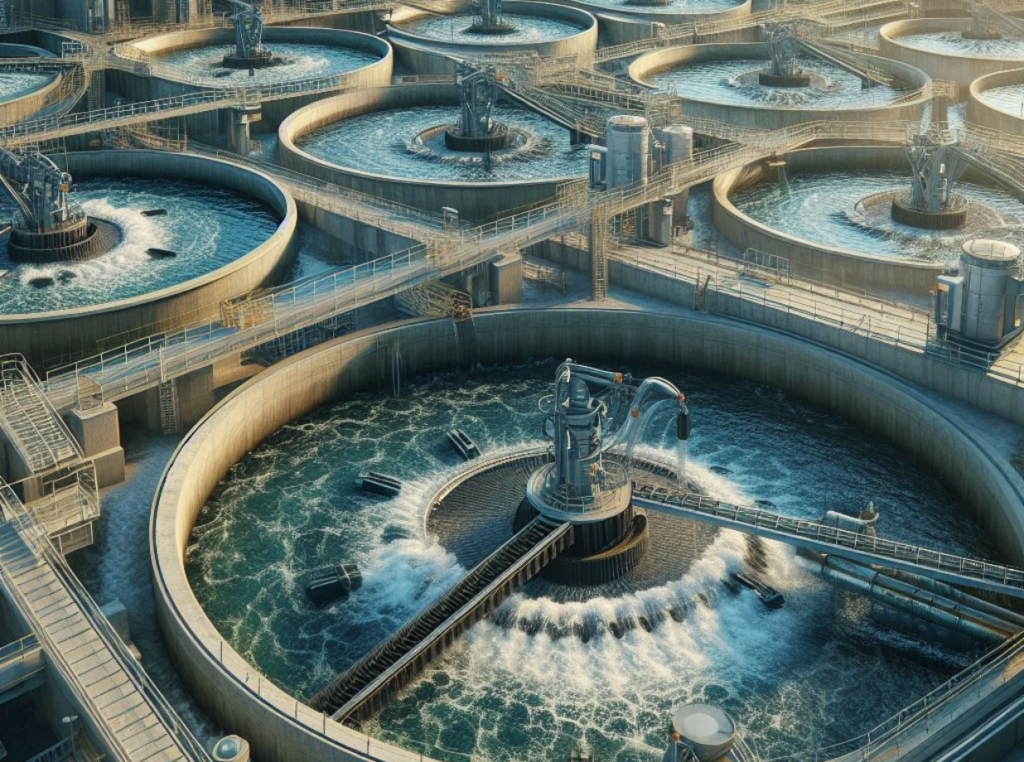Hey there, wastewater treatment enthusiasts! Today, we’re diving into the fascinating world of flocculation. Don’t worry if that sounds like a mouthful – we’ll break it down together and make it as easy as pie. So, grab a cup of coffee, and let’s chat about two troublemakers in the wastewater treatment process: pin floc and staggered floc.
What’s the Big Deal with Floc?

First things first – what the heck is floc? Well, imagine tiny particles in wastewater holding hands to form bigger clumps. That’s floc! These clumps are super important because they help us separate solids from water in the treatment process. But sometimes, things don’t go as planned, and that’s where our troublemakers come in.
Pin Floc: The Tiny Troublemaker
Picture this: you’re trying to make snowballs, but the snow is too powdery and won’t stick together. That’s kind of what pin floc is like in wastewater treatment. These teeny-tiny floc particles are a pain because they don’t settle well, leaving your treated water looking cloudy. Not cool, right?
What causes pin floc?
| Cause | Description | Quick Fix |
|---|---|---|
| Low MLSS | Not enough “stuff” in the water | Increase biomass concentration |
| High Organic Loading | Too much food for the microbes | Balance incoming organic matter |
| Excessive Shear | Overzealous mixing | Reduce aeration intensity |
| Nutrient Deficiency | Microbe malnutrition | Add necessary nutrients |
Want to learn more about MLSS? Check out this informative video on MLSS in wastewater treatment.
Staggered Floc: The Uneven Settler
Now, imagine you’re sorting marbles, but they keep rolling around because they’re all different sizes. That’s what staggered floc is like. You’ve got big flocs and small flocs all mixed up, making it hard for them to settle evenly. It’s like herding cats, but in water!
What leads to staggered floc?
| Cause | Description | Quick Fix |
|---|---|---|
| Unstable Flow Conditions | Water flow playing “stop and go” | Stabilize incoming flow rates |
| Inconsistent Aeration | Air bubbles throwing a party one minute and disappearing the next | Optimize and maintain steady aeration |
| Ineffective RAS Rates | Recycled sludge playing favorites | Adjust return activated sludge flow |
Curious about how aeration affects floc? This article on aeration in activated sludge systems might tickle your fancy!
How to Tackle These Troublemakers
Don’t worry, we’ve got some tricks up our sleeves to deal with these floc fiascos!
Dealing with Pin Floc:
- Bulk up the biomass (increase MLSS)
- Put the microbes on a diet (control organic loading)
- Gentle mixing is key (reduce aeration shear)
- Feed the hungry microbes (add nutrients)
Taming Staggered Floc:
- Keep the flow steady (stabilize flow rates)
- Even out the bubble party (optimize aeration)
- Fine-tune the recycling (adjust RAS rates)
Want to dive deeper into process control? The Water Environment Federation has a treasure trove of resources!
Floc Troubleshooting Cheat Sheet
| Problem | Symptoms | Possible Causes | Solutions |
|---|---|---|---|
| Pin Floc | – Cloudy effluent – Poor settling | – Low MLSS – High organic loading – Excessive shear – Nutrient deficiency | – Increase MLSS – Balance organic load – Reduce aeration intensity – Add nutrients |
| Staggered Floc | – Uneven settling – Mixed floc sizes | – Unstable flow – Inconsistent aeration – Ineffective RAS rates | – Stabilize flow rates – Optimize aeration – Adjust RAS flow |
Wrapping It Up
And there you have it, folks! Pin floc and staggered floc might be troublemakers, but with a little know-how and some clever adjustments, you can keep your wastewater treatment process running smooth as silk. Remember, every treatment plant is unique, so don’t be afraid to experiment and find what works best for your system.
Keep on flockin’, and may your effluent always be crystal clear!
Pro Tip: Always consult with experienced operators or process engineers when making significant changes to your treatment process. Safety first!
Further Reading:
Remember, the world of wastewater treatment is always evolving. Stay curious, keep learning, and don’t be afraid to ask questions. We’re all in this together, working towards cleaner water and a healthier environment!